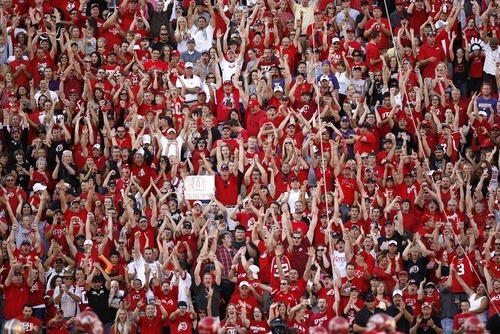This is an archived article that was published on sltrib.com in 2011, and information in the article may be outdated. It is provided only for personal research purposes and may not be reprinted.
Last year, the University of Utah increased its student recreation fee even though its rec fund had a balance of more than $1 million. It also levied a $6 fee to support a money-management counseling service that few students use.
According to a new legislative audit, the U. does a poor job of accounting for the $27.4 million it reaps in various student fees annually and has no documented rationale for some fee amounts, raising concerns about whether these funds are spent on designated purposes.
The audit, discussed Tuesday afternoon by legislative leaders, recommends that the U. adopt policies on how new fees are established and monitored; that restrictions be placed on the use of fees; that students be given more say over new fees; and that limits be placed on how large balances can grow. But mostly auditors urged greater accountability of mandatory fees that fund various nonacademic services, such as health care, transportation passes, sustainability projects, student media, campus activities, cultural events and intramural sports.
"The approval process is not defined and it is not clear who is responsible for ensuring fees are spent on appropriate uses. Students are not consistently included in decision making," auditor Susan Verhoef told the Legislative Audit Committee. "Documentation should include justification for fee amounts and what the fee can be used for."
Auditors found fees often were set too high for particular needs. The collegiate readership fee, which pays for national newspapers distributed on campus, raises more money than the program costs, for example.
U. officials agreed there are deficiencies and said they would consider auditors' recommendations. The university has already established a committee to review current procedures and develop a policy framework, said Cathy Anderson, associate vice president for budget and planning.
Senate President Michael Waddoups, R-Taylorsville, was disturbed such sloppy accounting was occurring in such a "glaring" manner at the state's flagship university. "We will really look for some changes," he said.
Rep. Curtis Oda, R-Clearfield, requested the audit, the latest legislative inquiry into how colleges and universities handle money. Oda has been a critic of the university, particularly over its firearms policies.
Last month, one audit faulted schools for spending money earmarked for maintenance by lawmakers on buildings that were not eligible for those funds. Another knocked USU Eastern and Dixie State College for not following guidelines in awarding low Utah resident tuition to students from other states.
The latest audit found that most schools in the Utah System of Higher Education have clear policies governing student fees and strong accounting for the money. They pointed to Utah State University as a structured "student-centered" model the U. could emulate.
In the past decade, U. student fees have increased 69 percent to $912 for full-time students, now representing 13 percent of the cost of attending school. Tuition has more than doubled since 2001, when fees represented almost 18 percent of the cost of a U. education, so fee hikes have not kept pace with tuition.
But auditors were concerned that six new fees were established during that period, including fees to support library acquisitions and general utility costs, but none — even those that were intended to be temporary — were discontinued. Other fees rack up huge surpluses. The hefty computing fee, which funds computer labs, online student registration and library databases, had a balance of $3.1 million last year.
Anderson said the excess in the recreation fund is earmarked for future equipment purchases.
The U.'s largest levy, the $238.48 building fee, is used to repay bonds and for maintenance on "auxiliary" buildings, such as the football stadium and sports arena, student union, bookstore and residential halls. The $16 fine arts fee gives students free admission to nearly all performances and exhibits produced by the College of Fine Arts and reduced admission to Kingsbury Hall events. Meanwhile, students pay 10 times more than that amount to support athletics programs, whether or not they attend a single event.
Auditors, however, described the fine arts fee as a way to spread arts department expenses to the entire student body. That's because the revenue it generates exceeds what the college loses in ticket receipts and the college uses the money to market events.
While auditors found that some fee-receiving departments provide careful oversight, they found six that commingle fee revenue with funds from other sources.
"Student fees simply provide another source of revenue that supplement the department's budget," Verhoef said.
Mandatory student fees
The U. collected $27.4 million from students last year to fund various nonacademic services, such as athletics, transportation, cultural events, computer labs and campus activities. A legislative audit found the university lacks coherent policies for establishing these fees and monitoring how the revenue is spent.



